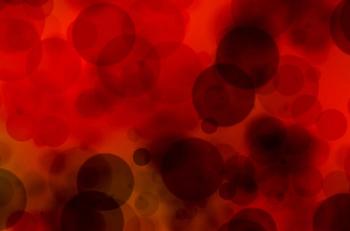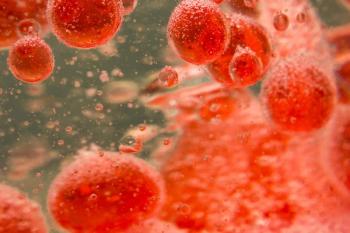
- ONCOLOGY Vol 13 No 3
- Volume 13
- Issue 3
Superiority of Allogeneic to Autologous Marrow or Blood Stem Cell Transplantation for Low-Grade Lymphoma
Several published reports have suggested that although there is a lesser relapse rate for allogeneic bone marrow transplantation (BMT) compared to autologous BMT in patients with low-grade lymphoma, no survival advantage was evident because of higher toxicity associated with allogeneic BMT. To address this issue, we compared outcome in 38 patients with low-grade lymphoma who received allogeneic BMT to 72 patients who underwent autologous BMT at our institution.
Several published reports have suggested that although there is a lesser relapse rate for allogeneic bone marrow transplantation (BMT) compared to autologous BMT in patients with low-grade lymphoma, no survival advantage was evident because of higher toxicity associated with allogeneic BMT. To address this issue, we compared outcome in 38 patients with low-grade lymphoma who received allogeneic BMT to 72 patients who underwent autologous BMT at our institution.
The allogeneic BMT group was younger (median age, 40.5 vs 47 years; P = .001) but included more patients with refractory disease (58% vs 22%; P < .0001). The median number of prior chemotherapy regimen was two in the allogeneic group and three in the autologous group (P = NS). In the autologous BMT group, 36% of patients had marrow involvement, compared to 60% in the allogeneic BMT group.
The preparative regimen used was cyclophosphamide (Cytoxan, Neosar)/etoposide/total-body irradiation for patients in the autologous BMT group and for 22 patients (58%) in the allogeneic BMT group. The remaining allogeneic BMT patients received BEAM (BCNU, etoposide, ara-C, and melphalan).
The overall survival (OS) rates were 55% vs 35% (P = .007) and event-free survival (EFS) rates were 44% vs 15% (P = .01) in favor of allogeneic BMT. The relapse rates at 3 years in the allogeneic BMT and autologous BMT groups were 25% and 64%, respectively (P = .08).
We compared various parameters for survival and EFS: disease status (sensitive vs refractory), age, preparative regimen used, prior number of chemotherapy regimens received, beta-2-microglobulin, lactic dehydrogenase (LDH) level, and histology. Autologous BMT patients did not show an advantage in any of these categories.
On univariate analysis, there was a survival advantage for allogeneic BMT compared to autologous BMT if there was bone marrow involvement (P = .003), if patients had three or fewer chemotherapy regimens (P = .007), low beta-2-microglobulin of £ 2 (P = .019), and normal LDH (P = .003).
On multivariate analysis that also included age, patients with allogeneic BMT had a survival advantage if they were < 40 years old (P = .007) and had beta-2-microglobulin £ 2 (P = .008). Only beta-2-microglobulin of £ 2 appeared to be significant for EFS (P = .03).
CONCLUSION: The data indicate a better outcome for allogeneic BMT vs autologous BMT for low-grade lymphoma, at a single institution. This advantage is most significant for younger patients with a low tumor burden.
Articles in this issue
almost 27 years ago
WHO Declares Lymphatic Mapping to Be the Standard of Care for Melanomaalmost 27 years ago
Navelbine Increased Elderly Lung Cancer Patients’ Survivalalmost 27 years ago
Consensus Statement on Prevention and Early Diagnosis of Lung CancerNewsletter
Stay up to date on recent advances in the multidisciplinary approach to cancer.

















































































